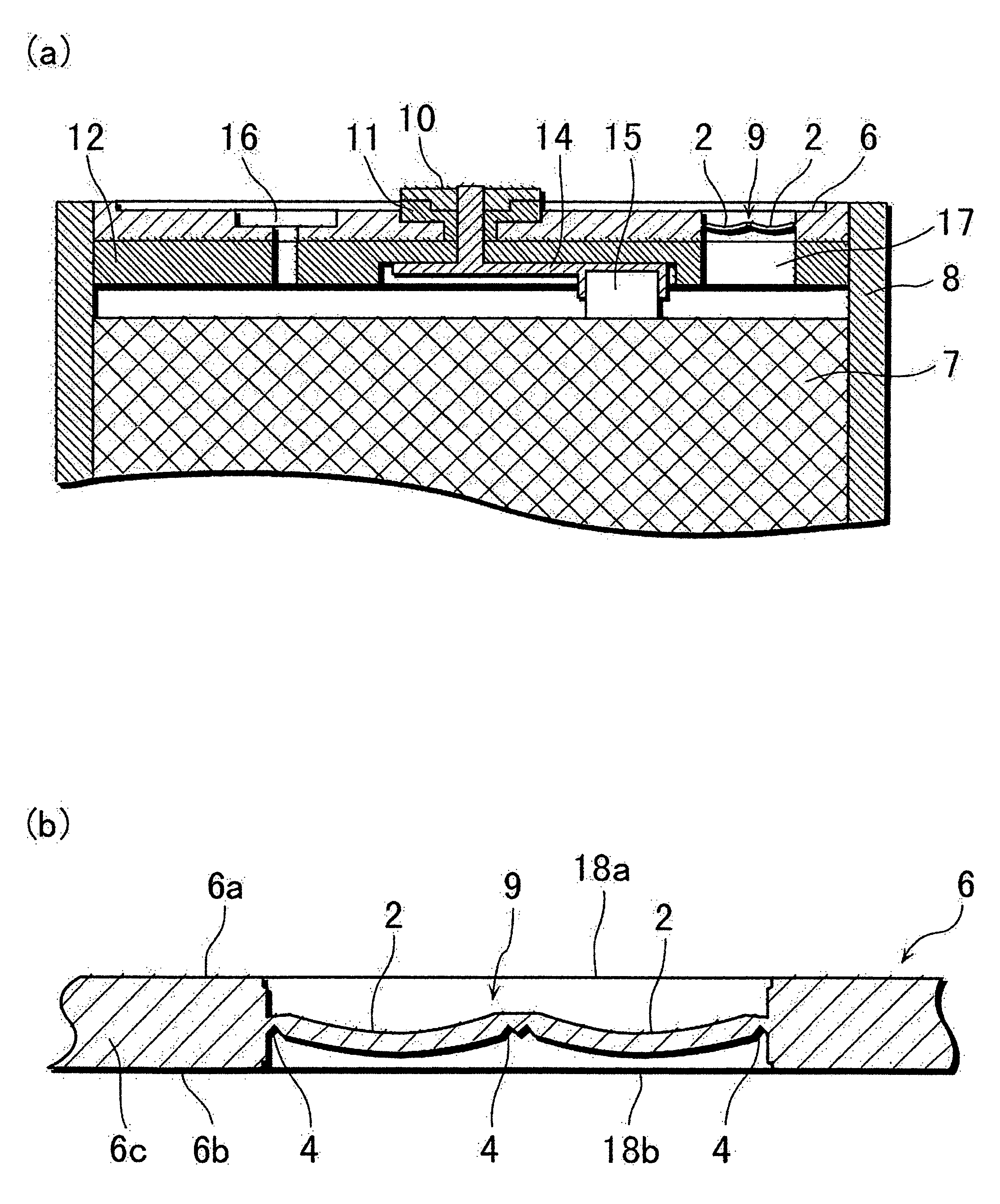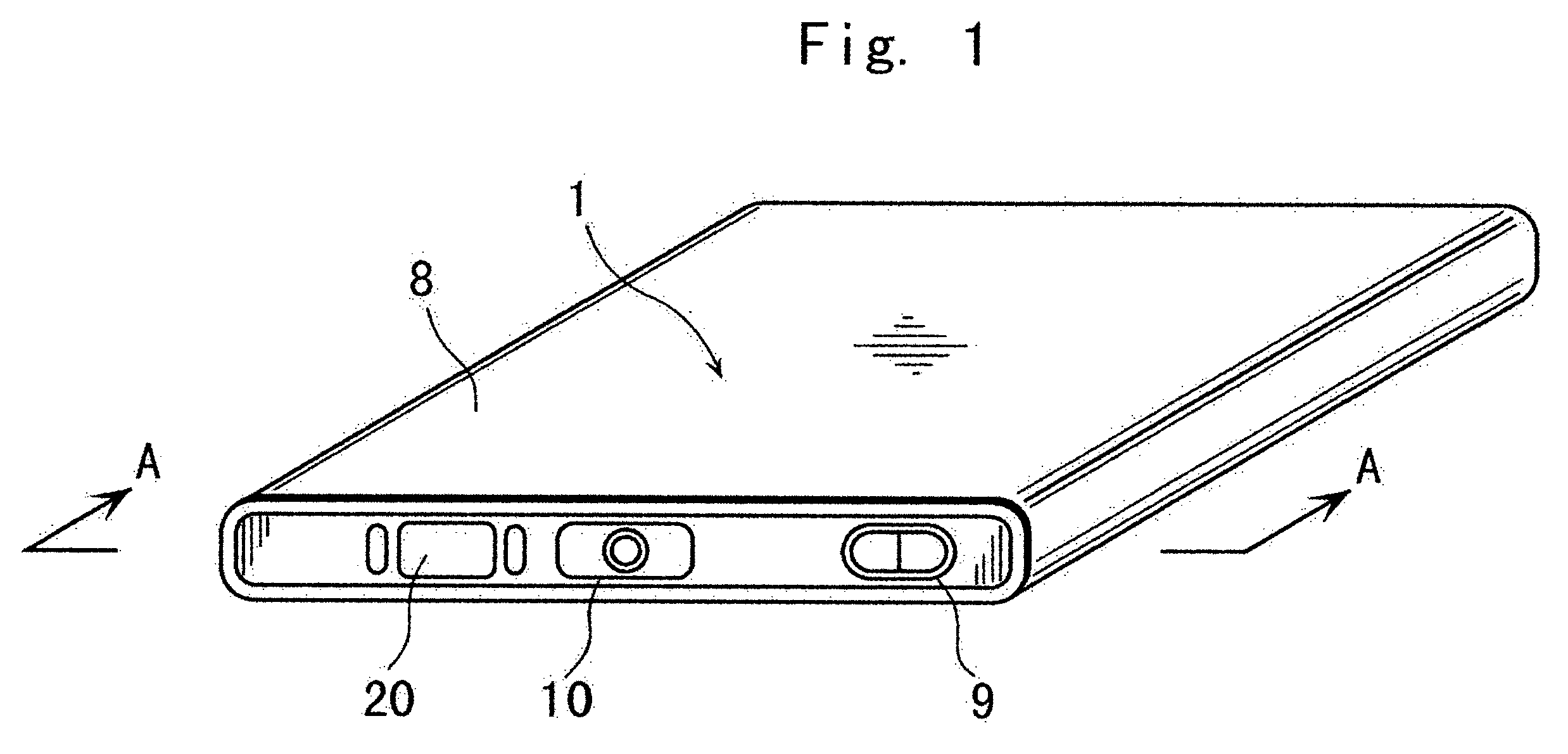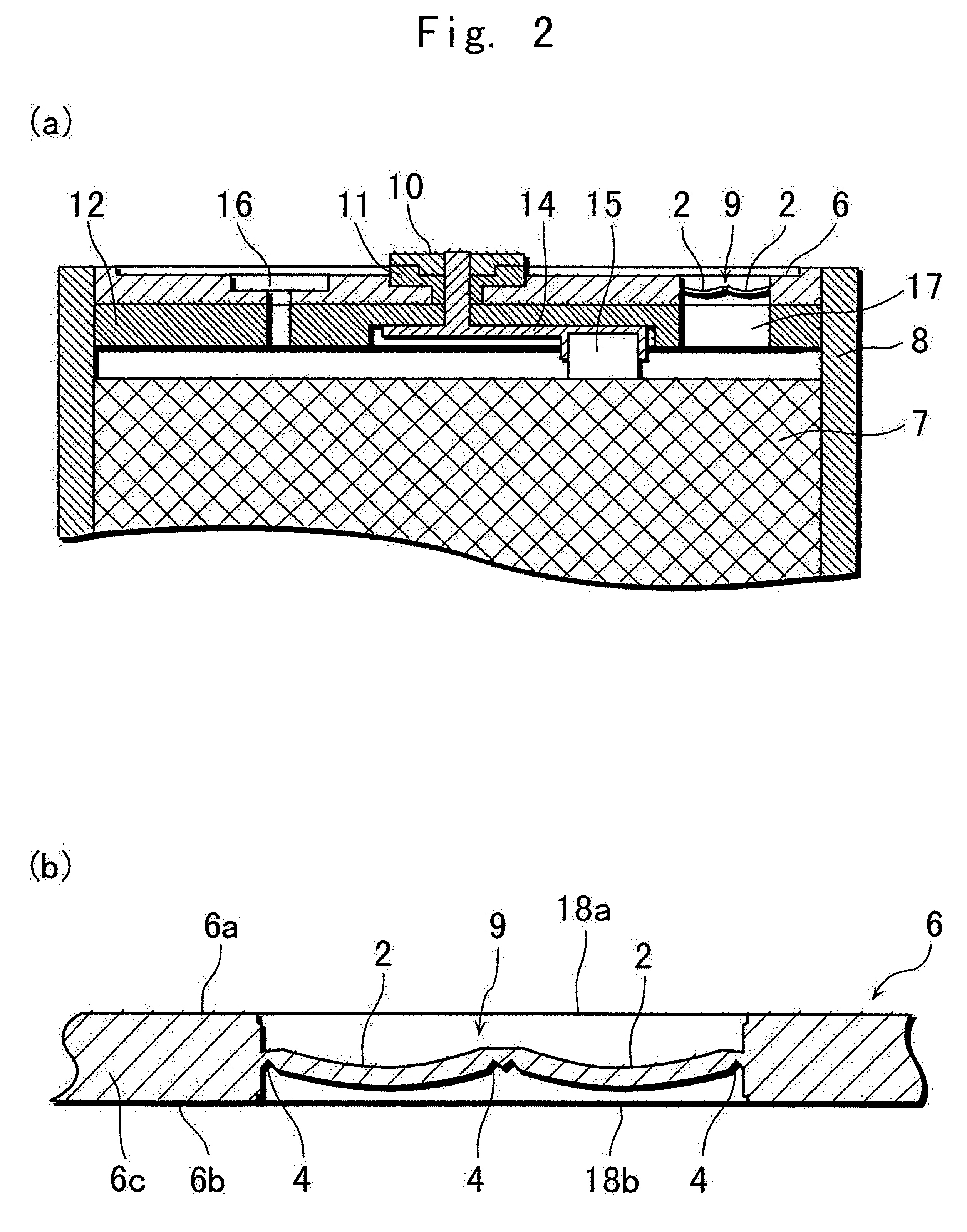Sealed cell having non-resealable safety valve
a safety valve and sealant technology, applied in the direction of cell components, non-aqueous electrolyte cells, non-aqueous electrolyte accumulators, etc., can solve the problems of variance in the pressure at which the thin portion is broken, the risk of cell burst, and the insufficient concentration of internal pressure relative to the internal pressure, so as to reduce the thickness of the valve structure, prevent damage, and minimize the effect of impact resistan
- Summary
- Abstract
- Description
- Claims
- Application Information
AI Technical Summary
Benefits of technology
Problems solved by technology
Method used
Image
Examples
example 1
[0040]An active material slurry was obtained by mixing 90 parts by mass of a positive electrode active material made of LiCoO2, 5 parts by mass of a conductivity enhancer made of carbon black, 5 parts by mass of a binder made of polyvinylidene fluoride, and a solvent made of N-methyl-2-pyrrolidone (NMP). This slurry was applied on both surfaces of a positive current collector made of an aluminum foil, and the solvent was dried. The resulting electrode plate was then rolled with a roller to a predetermined thickness and cut to a predetermined width and length. Further, a positive current collector tab made of an aluminum alloy was welded to the electrode plate.
[0041]Concurrently with the above step, an negative electrode active material slurry was prepared by mixing 95 parts by mass of a negative electrode active material made of powdered graphite, 5 parts by mass of a binder made of polyvinylidene fluoride, and a solvent made of N-methyl-2-pyrrolidone (NMP). This slurry was applied ...
example 2
[0046]A cell according to Example 2 was prepared in the same manner as that in Example 1 except that the thickness of the valve structure 9 at each of the break grooves 4 was made 45 μm.
PUM
| Property | Measurement | Unit |
|---|---|---|
| thickness | aaaaa | aaaaa |
| thickness | aaaaa | aaaaa |
| thickness | aaaaa | aaaaa |
Abstract
Description
Claims
Application Information
 Login to View More
Login to View More - R&D
- Intellectual Property
- Life Sciences
- Materials
- Tech Scout
- Unparalleled Data Quality
- Higher Quality Content
- 60% Fewer Hallucinations
Browse by: Latest US Patents, China's latest patents, Technical Efficacy Thesaurus, Application Domain, Technology Topic, Popular Technical Reports.
© 2025 PatSnap. All rights reserved.Legal|Privacy policy|Modern Slavery Act Transparency Statement|Sitemap|About US| Contact US: help@patsnap.com



